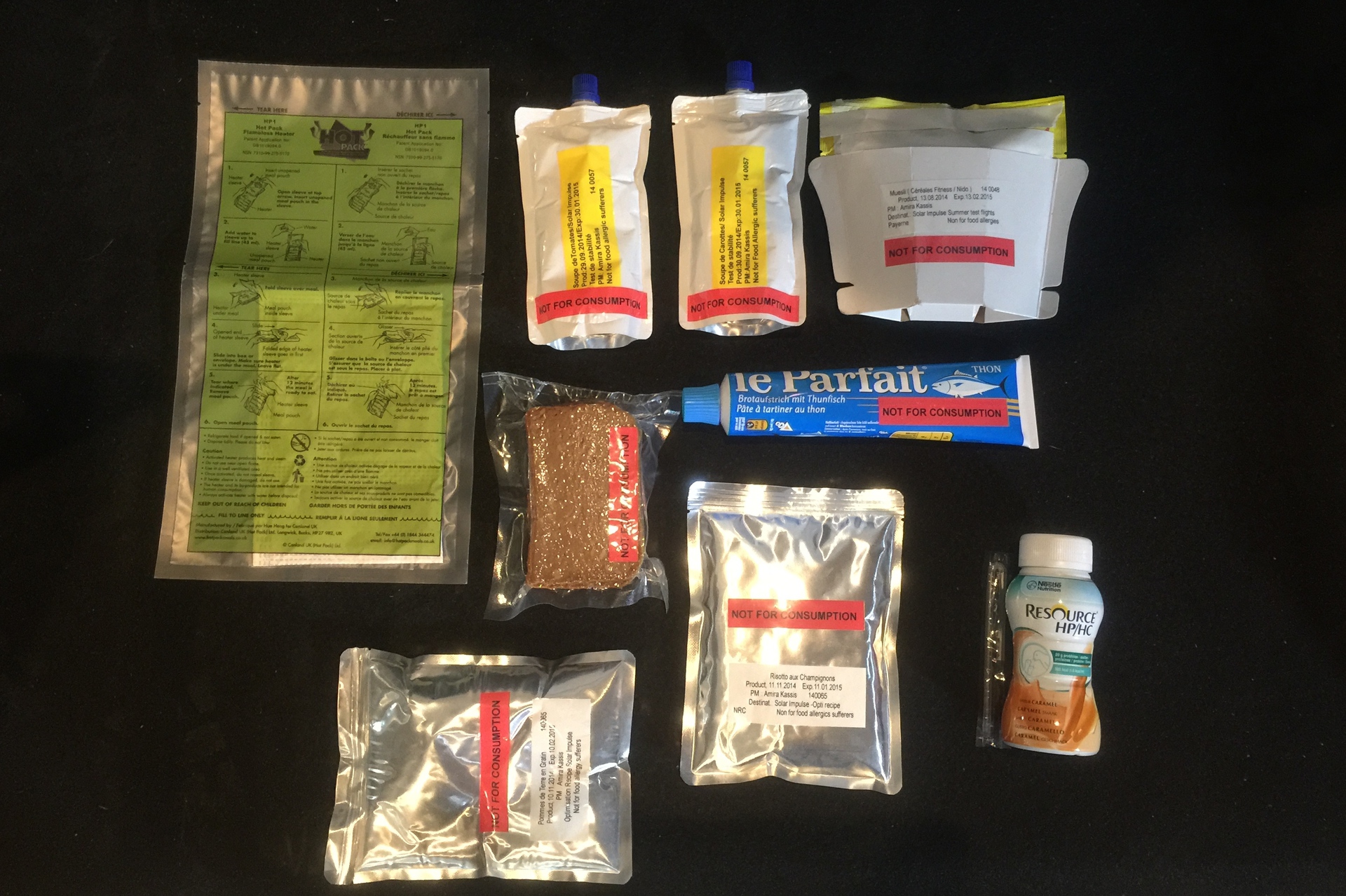What do Solar Impulse 2 pilots eat?
 The mass of food, water and oxygen cylinders that the pilot takes on board the Solar Impulse 2 should not exceed 30 kg. This is not such a problem for flights that take 12-20 hours, but if we are talking about five days - and it takes so much time to travel from Nanjing to the Hawaiian Islands - the team needs to make the most of every kilogram. Nestle helped the team develop a pilot ration.
The mass of food, water and oxygen cylinders that the pilot takes on board the Solar Impulse 2 should not exceed 30 kg. This is not such a problem for flights that take 12-20 hours, but if we are talking about five days - and it takes so much time to travel from Nanjing to the Hawaiian Islands - the team needs to make the most of every kilogram. Nestle helped the team develop a pilot ration.Every day, the pilot eats 11 times - the weight of food per day is 1.8 kilograms, and the energy - 3.5 thousand calories. Once a day, Picard or Borschberg will be able to indulge in hot meals. Artificial flavors and preservatives are completely absent in the diet, and in the process of preparing the dishes they were subjected only to heat treatment.
Food during the flight can be warmed with a special envelope filled with water. The menu includes tomato soup, baked potatoes, chicken curry, muesli, mushroom risotto, cereals. The type of food depends on the height of flight: at an altitude above 3.5 thousand meters in the diet should be more fat, and below - the emphasis is on proteins.

')




For four years , the Solar Impulse team has worked with eight scientists from Nestlé to create a pilot ration for world travel. The food had to be tested in different conditions, to check the safety of the packaging in the heat and cold, to invent ways to use it during the flight - for example, how easier it is to warm up lunch. The direct work of the pilots with the scientists from Nestle helped to formulate a diet in such a way that the food would bring pleasure. “Suhpayki” includes bottled water and Nescafe coffee. Pilots Bertrand Picard and Andre Borschberg believe that proper nutrition has a critical role in the success of the entire enterprise. Dr. Amira Cassis, head of the Nestle team, will follow the Solar Impulse two along the way. The journey will take about five months, during which time the plane will fly 35,000 kilometers in 500 hours.
Tasting before flight.


Source: https://habr.com/ru/post/374791/
All Articles